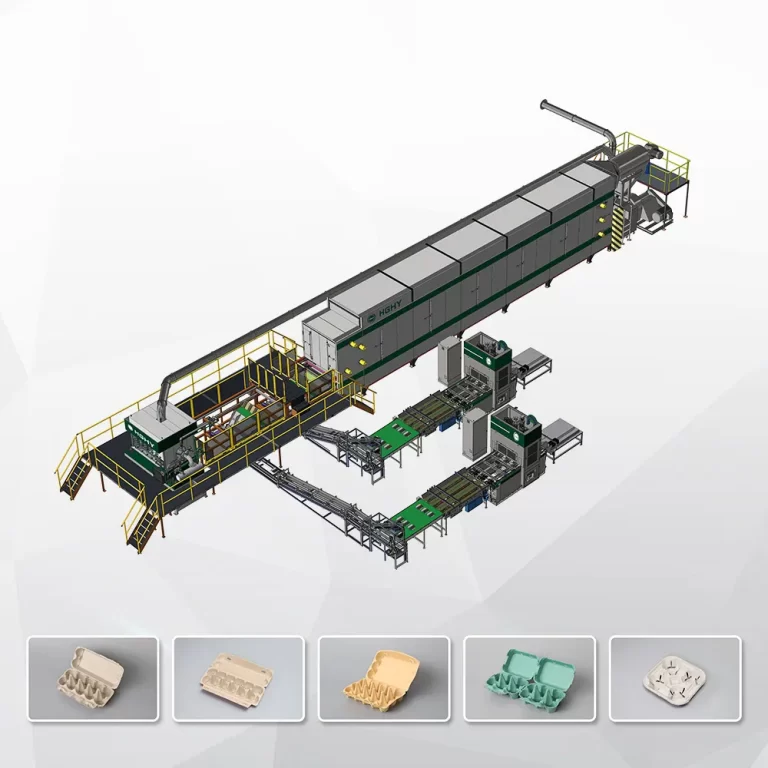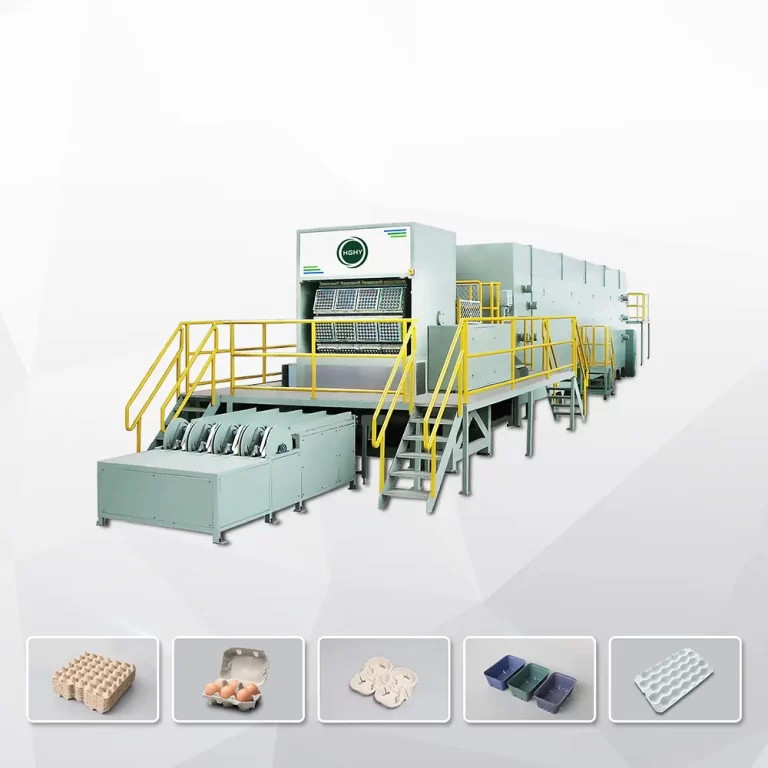Egg trays, commonly made from recycled paper pulp, play a crucial role in protecting eggs during storage and transportation. To maintain their functionality and meet market standards, it’s essential to ensure the consistent quality of these molded pulp products. Quality control should be implemented throughout the entire production process, from raw material selection to final packaging. Below are the key stages and control points to ensure the quality of egg tray products:
1. Raw Material Selection and Preparation
Key Control Points:
- Raw Material Quality: Use clean, high-quality waste paper such as old newspapers, cardboard, or office paper. Avoid materials contaminated with oil, plastic, or metal.
- Pulp Ratio Control: Maintain a proper mix of raw materials and water. The fiber length and consistency influence tray strength and surface smoothness.
- Pulp Consistency: Ensure the pulp is well-refined and free from large particles or impurities. Screen and filter the pulp to avoid blockages in forming molds.
2. Pulp Molding Process
Key Control Points:
- Mold Design and Maintenance: Use precision-engineered molds with uniform drainage and air suction. Regularly clean the molds to avoid pulp residue buildup that can affect product shape and thickness.
- Vacuum Pressure Control: Maintain stable vacuum suction to ensure even pulp distribution on the mold surface.
- Forming Time: Control the molding time to prevent under- or over-forming, which could lead to deformation or cracking during drying.
3. Drying Process
Key Control Points:
- Drying Temperature and Time: Adjust drying temperature and conveyor speed based on humidity and tray thickness. Overheating may cause warping, while under-drying leads to weak products.
- Even Airflow Distribution: Ensure even heat distribution across the drying chamber to avoid moisture imbalance.
- Moisture Content Control: The final product should have a moisture content of less than 10% to ensure strength and mold resistance.
4. Hot Pressing (Optional for Higher Quality Trays)
Key Control Points:
- Temperature and Pressure Settings: Use suitable hot press settings to enhance tray surface finish and strength.
- Mold Alignment: Ensure accurate mold matching to prevent edge misalignment or crushing.
- Cycle Time: Optimize pressing time to maintain productivity without compromising quality.
5. Trimming and Inspection
Key Control Points:
- Edge Trimming Accuracy: Remove excess fiber material cleanly without damaging the tray.
- Manual or Automatic Inspection: Check for cracks, deformities, or contamination. Random sampling should be done regularly.
- Thickness and Weight Testing: Ensure uniform product thickness and weight within acceptable tolerances.
6. Packaging and Storage
Key Control Points:
- Proper Stacking: Stack trays evenly to prevent deformation during storage and shipping.
- Moisture-Proof Packaging: Use appropriate packaging materials to protect products from moisture and dust.
- Storage Environment: Store in a dry, ventilated area with controlled humidity to prevent mold growth and product degradation.
Consistent quality in egg tray production requires strict monitoring and standardization across each step of the process. Investing in reliable machinery, trained operators, and a strong quality management system ensures that every tray meets functional and aesthetic standards. As market demand grows for eco-friendly packaging, quality will remain a defining factor for brand reputation and customer satisfaction.



